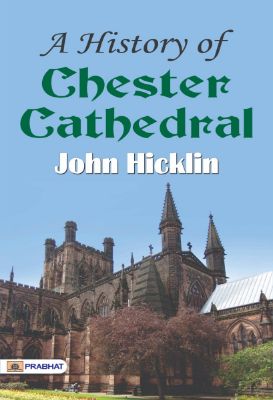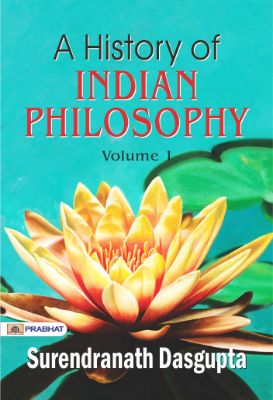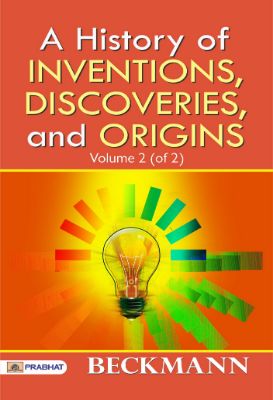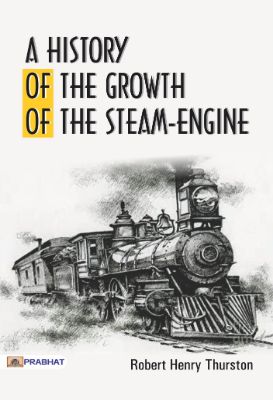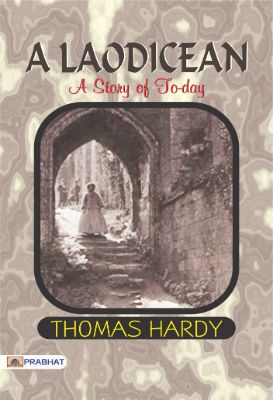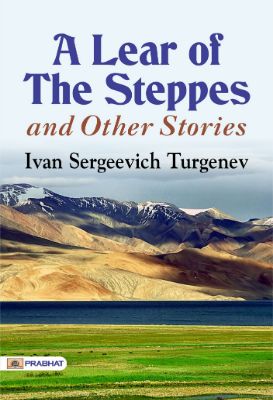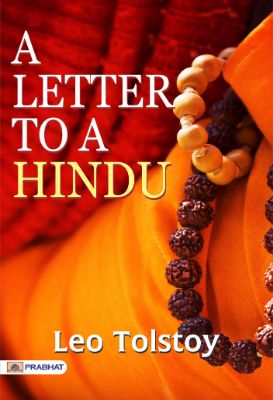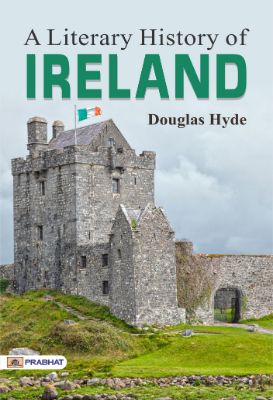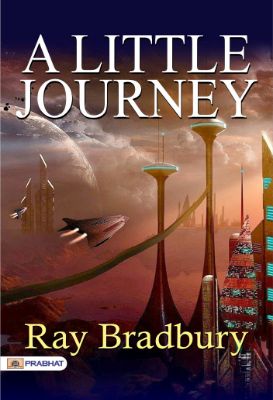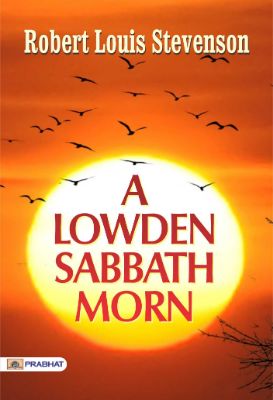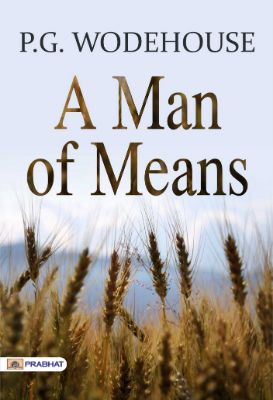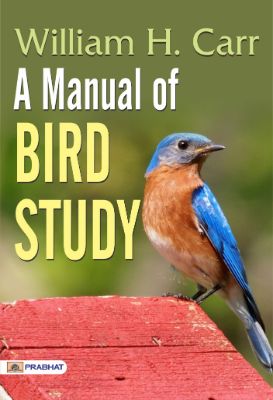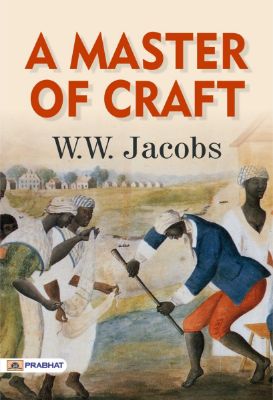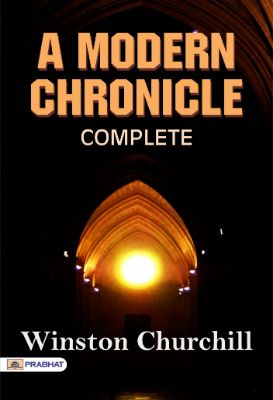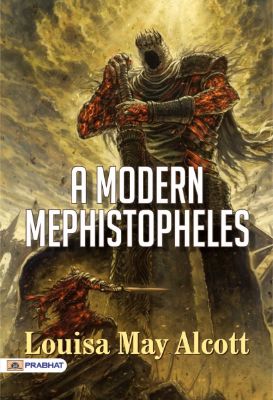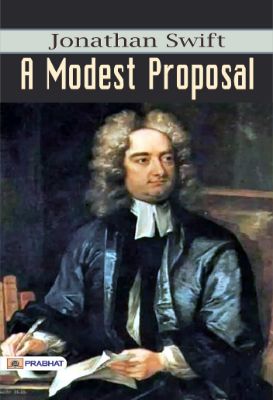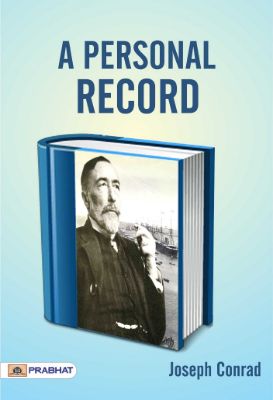Classic Books
Showing 101–150 of 4246 results
A History of Art for Beginners and Students: Painting, Sculpture, Architecture by Clara Erskine Clement
In speaking of art we often contrast the useful or mechanical arts with the Fine Arts; by these terms we denote the difference between the arts which are used in making such things as are necessary and useful in civilized life, and the arts by which ornamental and beautiful things are made.
A History of Chester Cathedral by John Hicklin
WHEN we reflect upon the momentous and happy results which have always followed the introduction of Christianity amongst a people;—how it has ever proved an up-lifting and progressive power; influencing man in the holiest affections and most inward laws of his moral being; extending its benign agency through all the relationships of social life, and acting in various methods as a living principle in the community;—we think that in ascribing to our religious history a deeper significance and importance than appertains to any other department of inquiry, we are only claiming for it a position which may be established by a wide induction of facts.
A History of Indian Philosophy, Volume 1 by Surendranath Dasgupta
Indian philosopher and scholar Surendranath Dasgupta’s book ‘A History of Indian Philosophy, Volume 1’ was first published in the year 1922. This book is an attempt to introduce the readers of philosophy with the richness and relevance of Indian philosophy through its history in great details.
A History of Inventions, Discoveries, and Origins, Volume 1 (of 2) by Beckmann
That the arts had their rise in the East, and that they were conveyed thence to the Greeks, and from them to the Romans, is universally admitted. Respecting the inventions and discoveries however of the earliest ages, nothing certain is known. Many of those most useful in common life must have been the production of periods when men were little acquainted with letters, or any sure mode of transmitting an account of their improvements to succeeding generations. The taste which then prevailed of giving to every thing a divine origin, rendered traditional accounts fabulous; and the exaggeration of poets tended more and more to make such authorities less worthy of credit. A variety of works also, which might have supplied us with information on this subject, have been lost; and the relations of some of those preserved are so corrupted and obscure, that the best commentators have not been able to illustrate them. This in particular is the case with many passages in Pliny, an author who appears to have collected with the utmost diligence whatever he thought useful or curious, and whose desire of communicating knowledge seems to have been equal to his thirst for acquiring it.
A History of Inventions, Discoveries, and Origins, Volume 2 (of 2) by Beckmann
The power of steam was not entirely unknown to the ancients, but before the æra rendered memorable by the discoveries of James Watt, the steam-engine, which has since become the object of such universal interest, was a machine of extremely limited power, inferior in importance and usefulness to most other mechanical agents used as prime movers. Hero of Alexandria, who lived about 120 years before the birth of Christ, has left us the description of a machine, in which a continued rotatory motion was imparted to an axis by a blast of steam issuing from lateral orifices in arms placed at right angles to it. About the beginning of the seventeenth century, a French engineer, De Caus, invented a machine by which a column of water might be raised by the pressure of steam confined in the vessel, above the water to be elevated; and in 1629, Branca, an Italian philosopher, contrived a plan of working several mills by a blast of steam against the vanes; from the descriptions, however, which have been left us of these contrivances, it does not appear that their projectors were acquainted with those physical properties of elasticity and condensation on which the power of steam as a mechanical agent depends.
A History of Roman Classical Literature. by R. W. Browne
The history of Roman Classical Literature, although it comprehends the names of many illustrious writers and many voluminous works, is, chronologically speaking, contained within narrow limits. Dating from its earliest infancy, until the epoch when it ceased to deserve the title of classical, its existence occupies a period of less than four centuries.
A History of the Growth of the Steam-Engine by Robert Henry Thurston
Robert Henry Thurston’s present book ‘A History of the Growth of the Steam-Engine’, as evident from the title itself, gives the history of the development and changes in the model of the steam engine. It was first published in the year 1886.
A History of the New Thought Movement by Horatio W. Dresser
Chapters include: The New Age; Quimby The Pioneer; Quimby’s Method Of Healing; The First Author; The Beginnings Of Christian Science; The Mental Science Period; The New Thought; The First Organizations; The First Conventions; The International New Thought Alliance; Other Organizations; The Movement In Foreign Lands; Looking Forward; and, Kindred Movements.
A History of the Philippines by David P. Barrows
First published in the year 1905, the present book ‘A History of the Philippines’ by David P. Barrows was written on the Philippinean government’s recommendation with an aim to provide the history of their country to the students in schools.
A History of the United States by Cecil Chesterton
A People’s History of the United States is a 1980 non-fiction book by American historian and political scientist Howard Zinn. In the book, Zinn presented what he considered to be a different side of history from the more traditional “fundamental nationalist glorification of country”.
A House of Gentlefolk by Ivan Sergeevich Turgenev
A bright spring day was fading into evening. High overhead in the clear heavens small rosy clouds seemed hardly to move across the sky but to be sinking into its depths of blue.
In a handsome house in one of the outlying streets of the government town of O—— (it was in the year 1842) two women were sitting at an open window; one was about fifty, the other an old lady of seventy.
The name of the former was Marya Dmitrievna Kalitin. Her husband, a shrewd determined man of obstinate bilious temperament, had been dead for ten years. He had been a provincial public prosecutor, noted in his own day as a successful man of business. He had received a fair education and had been to the university; but having been born in narrow circumstances he realized early in life the necessity of pushing his own way in the world and making money.
A House-Boat on the Styx by John Kendrick Bangs
First published in the year 1895, the present fantasy novel ‘A House-Boat on the Styx’ by John Kendrick Bangs begins with Charon, ferryman of the Styx being startled—and annoyed—by the arrival of a houseboat on the Styx. At first afraid that the boat will put him out of business, he later finds out that he is actually to be appointed the boat’s janitor. What follows are eleven more stories which are set on the house boat.
A Journal of the Plague Year by Daniel Defoe
The present book ‘A Journal of the Plague Year’ by Daniel Defoe is a historical fictional novel. It was first published in the year 1722. This novel is an account of one man’s experiences of the year 1665, in which the Great Plague or the bubonic plague struck the city of London. The book is told somewhat chronologically, though without sections or chapter headings.
A Journey from This World to the Next by Henry Fielding
“Whether the ensuing pages were really the dream or vision of some very pious and holy person; or whether they were really written in the other world, and sent back to this, which is the opinion of many (though I think too much inclining to superstition); or lastly, whether, as infinitely the greatest part imagine, they were really the production of some choice inhabitant of New Bethlehem, is not necessary nor easy to determine. It will be abundantly sufficient if I give the reader an account by what means they came into my possession.” -Introduction
A Journey of Hope and Belief by Dr. C.P. Thakur
Dr CP Thakur’s A Journey of Hope and Belief is the story of a man born into a simple farming family, in a village in North Bihar. His childhood was marred by recurrent fevers that kept him homebound for months together. He was in high school when the disease was finally diagnosed as Kala-azar. Undeterred, he went on to study medicine and did his MRCP from both London and Edinburg. Back in India, he made a name for himself as a remarkable doctor and scientist. His pioneering research in the field of Kala-azar earned him recognition the world over, including the Lifetime Achievement Award from WHO. In 1984, he embarked on a new journey in public life when he was elected a Member of Parliament from Patna and continues to serve the people whole heartedly even today.
A Journey of Truth by Siddhant Sancheti
The original title of the manuscript was ‘The Honest Sufferer’. The title reflected the inner pain and turmoil that he may have gone through in the short life he lived, to live by his own high standards of honesty. This novel can be described as fictionalized biography of Siddhant, with his hero Suraj’s character reflecting his own life while other characters and stories around him have been fictionalized as per demands of the writer in him.
This novel is a tribute to all fine human beings who live their lives on principles of truth and integrity, and gives us hope that there is and will always be goodness in the world.
A Lady of Quality by Frances Hodgson Burnett
“On a wintry morning at the close of 1690, the sun shining faint and red through a light fog, there was a great noise of baying dogs, loud voices, and trampling of horses in the courtyard at Wildairs Hall; Sir Jeoffry being about to go forth a-hunting, and being a man with a choleric temper and big, loud voice, and given to oaths and noise even when in good-humour, his riding forth with his friends at any time was attended with boisterous commotion.” -an excerpt
A Lady’s Life in the Rocky Mountains by Isabella L. Bird
I have found a dream of beauty at which one might look all one’s life and sigh. Not lovable, like the Sandwich Islands, but beautiful in its own way! A strictly North American beauty—snow-splotched mountains, huge pines, red-woods, sugar pines, silver spruce; a crystalline atmosphere, waves of the richest color; and a pine-hung lake which mirrors all beauty on its surface. Lake Tahoe is before me, a sheet of water twenty-two miles long by ten broad, and in some places 1,700 feet deep. It lies at a height of 6,000 feet, and the snow-crowned summits which wall it in are from 8,000 to 11,000 feet in altitude. The air is keen and elastic. There is no sound but the distant and slightly musical ring of the lumberer’s axe.
A Laodicean : A Story of To-day by Thomas Hardy
“The changing of the old order in country manors and mansions may be slow or sudden, may have many issues romantic or otherwise, its romantic issues being not necessarily restricted to a change back to the original order; though this admissible instance appears to have been the only romance formerly recognized by novelists as possible in the case. Whether the following production be a picture of other possibilities or not, its incidents may be taken to be fairly well supported by evidence every day forthcoming in most counties.” -Preface
A Lear of the Steppes, etc. by Ivan Sergeevich Turgenev
An examination of A Lear of the Steppes is of especial interest to authors, as the story is so exquisite in its structure, so overwhelming in its effects, that it exposes the artificiality of the great majority of the clever works of art in fiction. A Lear of the Steppes is great in art because it is a living organic whole, springing from the deep roots of life itself; and the innumerable works of art that are fabricated and pasted together from an ingenious plan—works that do not grow from the inevitability of things—appear at once insignificant or false in comparison.
A Letter to a Hindu by Graf Leo Tolstoy
Whenever thou feelest that thy feet are becoming entangled in the interlaced roots of life, know that thou has strayed from the path to which I beckon thee: for I have placed thee in broad, smooth paths, which are strewn with flowers. I have put a light before thee, which thou canst follow and thus run without stumbling. KRISHNA.
A Life of William Shakespeare by Sir Sidney Lee
Life of William Shakespeare is a biography of William Shakespeare by the eminent critic Sidney Lee. This book,, was an immediate popular success and was regarded for much of the twentieth century as the most reliable account of Shakespeare’s life then available.
A Literary and Historical Atlas of Asia by J. G. Bartholomew
Fourth in the series of special atlases designed for “Everyman’s Library” the present volume deals with the countries of Asia, whose history and geography, and whose possibilities, great and grave, are alike reflected in the maps and charts that follow. When Queen Elizabeth granted to certain merchants of London a charter that gave them a roving commission to trade in the East Indies, she could not foresee the immense developments that were to rise from that adventurous commerce between east and west. The successive maps of India with their frontier changes mark the gradual advance of an old world toward the new one knit by powerful mutual ties to the Isle of Britain; and recently we have seen what it is to be hoped will open a greater era for those regions, marked by a return to the old capital of Delhi, and a resuming of ancient rites which first gained their symbolism in those lands.
A Literary History of Ireland by Douglas Hyde
A wonderful authoritative treatise covering the history from foreign sources, Druidism, early missionaries (Patrick, Brigit, etc.), the use of letters, Columcille, the Danish period, classic Irish poets. The author later became the first President of Ireland. – See more at: https:++www.thornbooks.com+pages+books+19950+douglas-hyde-an-craoibhin-aoibhinn+a-literary-history-of-ireland#sthash.WZHesz5o.dpuf
A Little Journey by Ray Bradbury
First published in the year 1951, Ray Bradbury’s story ‘A Little Journey’ was written for the Galaxy Science Fiction magazine. This marks the celebrated Galaxy editor Horace Gold’s last editorial work at Galaxy.
A Little Princess by Frances Hodgson Burnett
A Little Princess’ is a children’s novel by Frances Hodgson Burnett. It was first published as a book in the year 1905. It is an expanded version of the short story ‘Sara Crewe: or, What Happened at Miss Minchin’s’. It is one of the most read and critically acclaimed children’s fantasy novel since it’s first publication.
A Lost Lady by Willa Cather
Willa Cather’s A Lost Lady was first published in 1923. It tells the story of Marian Forrester and her husband, Captain Daniel Forrester who live in the Western town of Sweet Water, along the Transcontinental Railroad.
A Lost Leader by Dorothea Townshend
One December evening, in the year 1648, the little town of Farnham showed unusual signs of life. Troopers were dismounting and leading their horses away to their stables, or were lounging at the doors of the houses where they were quartered, and a crowd of curious country folk and villagers gathered to stare at them, and even to put questions to the more affable-looking of the steel-coated soldiers.
The press was greatest round the entrance of a house of the better class that stood back from the street with all the dignity that a flagged forecourt and a couple of high brick gate-pillars could lend it.
There the sentries, who were stationed at the door, had some ado to keep back the curious throng, and many a sturdy country farmer shouldered his way into the house in the wake of his squire to catch a glimpse of his king, the ill-fated King Charles, who was to rest that night at Farnham on his last journey from the prison at Hurst Castle to the scaffold at Whitehall.
A Lowden Sabbath Morn by Robert Louis Stevenson
Many of the earliest books, particularly those dating back to the 1900s and before, are now extremely scarce and increasingly expensive. We are republishing these classic works in affordable, high quality, modern editions, using the original text and artwork.
A Man from the North by Arnold Bennett
Famous British writer Arnold Bennett’s novel ‘A Man from the North’ was first published in the year 1911. “There grows in the North Country a certain kind of youth of whom it may be said that he is born to be a Londoner. The metropolis, and everything that appertains to it, that comes down from it, that goes up into it, has for him an imperious fascination. Long before schooldays are over he learns to take a doleful pleasure in watching the exit of the London train from the railway station.” -an excerpt
A Man of Means by P. G. Wodehouse
First of a Series of Six Stories, When a seed-merchant of cautious disposition and an eye to the main chance receives from an eminent firm of jam-manufacturers an extremely large order for clover-seed, his emotions are mixed. Joy may be said to predominate, but with the joy comes also uncertainty. Are these people, he asks himself, proposing to set up as farmers of a large scale, or do they merely want the seed to give verisimilitude to their otherwise bald and unconvincing raspberry jam? On the solution of this problem depends the important matter of price, for, obviously, you can charge a fraudulent jam disseminator in a manner which an honest farmer would resent.
A Manual of Bird Study by William H. Carr
This Bird Study Manual is intended especially for the use of teachers and pupils in the New York City Schools. It is written primarily to describe the birds contained in the circulating nature study collections which the American Museum of Natural History loans to public schools. However it may be used as a general guide to bird study as well. The various study outlines tell the story of different projects that may be developed in connection with birds. Typical birds are illustrated. As much as is possible in the life history of each bird is given. The bird poems may be used in connection with the study of English. The study of birds may very well be correlated with the studies of many other subjects such as Civics, Geography and other topics.
A Master of Craft by W. W. Jacobs
Captain Flower, an ardent admirer of the fairer sex, takes full advantage of his sea travels around the world, wooing women wherever he goes.
A Method of Tanning without Bark by William Maple
That it is the best Policy in any Government, to encourage, and provide for the full Imployment of the People; since thereby, the Number, Wealth, Strength, and Quiet of the Inhabitants are increased.
That the Gain, or Loss of any Nation by Trade, is known, and determined by the Proportion, which the Exports bear in Value to the Imports. On this depends the absolute Quantity of Money in a Nation; the Relative Quantity of the several Species, that composeth this Money, being ascertained by the Value imposed on those Species; either as it agrees with, or differs from the Value set thereon by other Nations.
A Nation certainly loses by a Trade, whose Exports are not compleatly manufactured, and whole Imports are fully wrought.
A few Manufactures will serve to exchange for great Quantities of the simple Produce of the Earth. The Value of Manufactures, being principally owing to Labour and Art.
If upon these Principles, we examine the State of the Trade of Ireland; I fear we shall find it, in a very declining, and ruinous Condition.
A Midsummer Night’s Dream by William Shakespeare
Full of vexation come I, with complaint
Against my child, my daughter Hermia.
Stand forth, Demetrius. My noble lord,
This man hath my consent to marry her.
Stand forth, Lysander. And, my gracious Duke,
This man hath bewitch’d the bosom of my child.
Thou, thou, Lysander, thou hast given her rhymes,
And interchang’d love-tokens with my child.
Thou hast by moonlight at her window sung,
With feigning voice, verses of feigning love;
And stol’n the impression of her fantasy
A Millionaire of Yesterday by E. Phillips Oppenheim
“Filth,” grunted Trent—“ugh! I tell you what it is, my venerable friend—I have seen some dirty cabins in the west of Ireland and some vile holes in East London. I’ve been in some places which I can’t think of even now without feeling sick. I’m not a particular chap, wasn’t brought up to it—no, nor squeamish either, but this is a bit thicker than anything I’ve ever knocked up against. If Francis doesn’t hurry we’ll have to chuck it! We shall never stand it out, Monty!”
The older man, gaunt, blear-eyed, ragged, turned over on his side. His appearance was little short of repulsive. His voice when he spoke was, curiously enough, the voice of a gentleman, thick and a trifle rough though it sounded.
A Modern Chronicle — Complete by Winston Churchill
This book was converted from its physical edition to the digital format by a community of volunteers.
A Modern Mephistopheles by Louisa May Alcott
This work has been selected by scholars as being culturally important, and is part of the knowledge base of civilization as we know it.
A Modern Utopia by H.G. Wells
A Modern Utopia is a 1905 novel by H. G. Wells. Because of the complexity and sophistication of its narrative structure, A Modern Utopia has been called “not so much a modern as a postmodern utopia.”
A Modest Proposal by Jonathan Swift
A Modest Proposal’ is a 1729 Juvenalian satirical essay written and published anonymously by Jonathan Swift. Swift suggests that the impoverished Irish might ease their economic troubles by selling their children as food for rich gentlemen and ladies. This satirical hyperbole mocked heartless attitudes towards the poor as well as British policy toward the Irish in general.
A Motor-Flight Through France by Edith Wharton
This work has been selected by scholars as being culturally important, and is part of the knowledge base of civilization as we know it.
A Mystery with a Moral by Laurence Sterne
“The next Mystery Story is like no other in these volumes. The editor’s defense lies in the plea that Laurence Sterne is not like other writers of English. He is certainly one of the very greatest. Yet nowadays he is generally unknown. His rollicking frankness, his audacious unconventionality, are enough to account for the neglect. Even the easy mannered England of 1760 opened its eyes in horror when “Tristram Shandy” appeared. “A most unclerical clergyman,” the public pronounced the rector of Sutton and prebendary of York.” -Introduction by Laurence Sterne
A Nobleman’s Nest by Ivan Sergeevich Turgenev
In front of the open window of a handsome house, in one of the outlying streets of O * * * the capital of a Government, sat two women; one fifty years of age, the other seventy years old, and already aged.
A Pair of Blue Eyes by Thomas Hardy
First published in the year 1873, ‘A Pair of Blue Eyes’ by Thomas Hardy describes the love triangle of a young woman, Elfride Swancourt, and her two suitors from very different backgrounds. Stephen Smith is a socially inferior but ambitious young man who adores her and with whom she shares a country background. Henry Knight is the respectable, established, older man who represents London society. Although the two are friends, Knight is not aware of Smith’s previous liaison with Elfride.
A Patriot Monk Swami Vivekananda by Shanta Kumar
In jail, I read the complete literature of Swami Vivekananda. One thing which impressed and amazed me very much was that Swami Vivekananda left his home and all worldly affairs to attain salvation but after travelling the whole of India for four years and seeing the poverty of our country, gave up the idea of Moksha too. On the rock of Kanyakumari, he made a historical announcement—“O Lord! I do not want salvation till every human being of my country is not free from hunger: And let me be born again and again to serve my motherland.” Not only this, he called upon all the countrymen to forget all the Gods and Goddesses for sometime as the poor countrymen are the greatest Gods and Goddesses and their service is the highest worship. He gave the Mantra of DRIDARA-NARAYANA.
—Shanta Kumar
A Personal Record by Joseph Conrad
First published in the year 1912, the present book titled ‘A Personal Record’ was written by one of the famous British, colonial fiction writer Joseph Conrad. This book is his autobiographical work.
A Pilgrim Maid A Story of Plymouth Colony in 1620 by Marion Ames Taggart
A young girl, brown-haired, blue-eyed, with a sweet seriousness that was neither joy nor sorrow upon her fair pale face, leaned against the mast on the Mayflower’s deck watching the bustle of the final preparations for setting sail westward. A boy somewhat older than she stood beside her whittling an arrow from a bit of beechwood, whistling through his teeth, his tongue pressed against them, a livelier air than a pilgrim boy from Leyden was supposed to know, and sullenly scorning to betray interest in the excitement ashore and aboard. A little girl clung to the pretty young girl’s skirt; the unlikeness between them, though they were sisters, was explained by their being but half sisters.
A Pinch of Salt Rocks An Empire -(Salt March-Dandi March) by Sarojini Sinha
Twenty-four years earlier, in South Africa, where he was then living, his satyagraha had forced the government to repeal the law forcing Indians in the Transvaal to register themselves and carry certificates bearing their finger prints to prove that they had the right to live in that country.
In India, he was applying the same tactics of defying the authority of the alien British Government in a peaceful, non-violent way and refusing to co-operate with it.
The British had come to India 330 years earlier, landing at the port of Surat, hardly 50 Kilometers from Dandi, where Gandhiji and his followers stood on April 5, 1930, ready to begin the struggle against them.
A Plea for Captain John Brown by Henry David Thoreau
The present book ‘A Plea for Captain John Brown’ was written by famous American essayist, poet, philosopher, abolitionist, naturalist, tax resister, development critic, surveyor, and historian – Henry David Thoreau. It is an essay which is based on a speech Thoreau first delivered to an audience at Concord, Massachusetts on October 30, 1859, two weeks after John Brown’s raid on Harper’s Ferry, and repeated several times before Brown’s execution on December 2, 1859. It was first published in the year 1859.
A Pocket Dictionary: Welsh-English by William Richards
The growing enthusiasm amongst the Welsh to become more aware of the English language is one of the hopeful signs of the times. For every one of us who had an understanding of English in the beginning of this century, it’s like no doubt that there are twenties if hundreds do not understand it now. From the other side, there are more than a few of the English people who visit us and our country during the summer months are making a small effort to learn Welsh.



